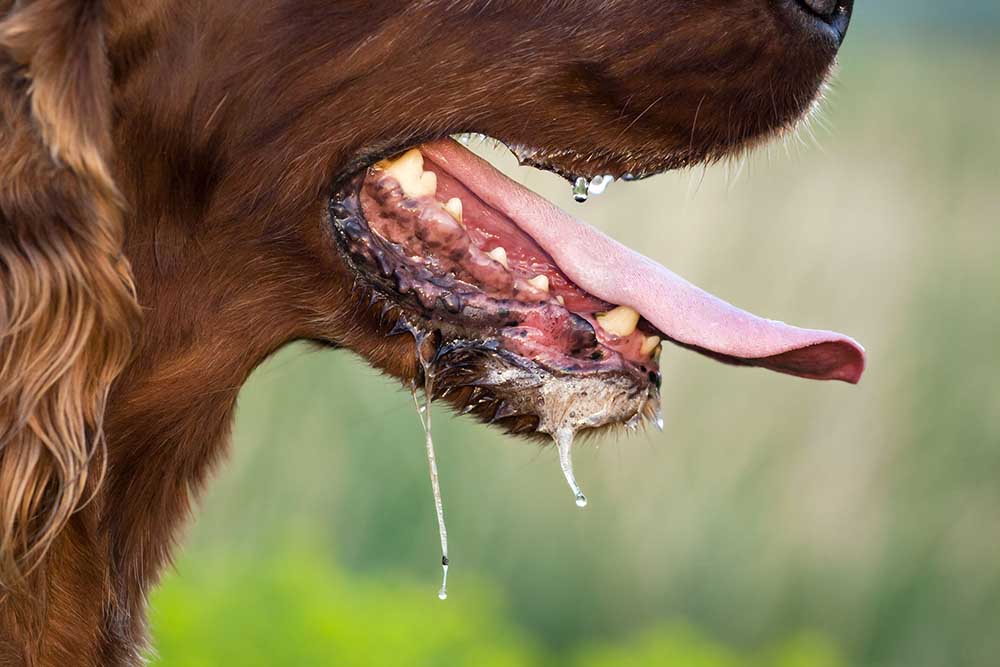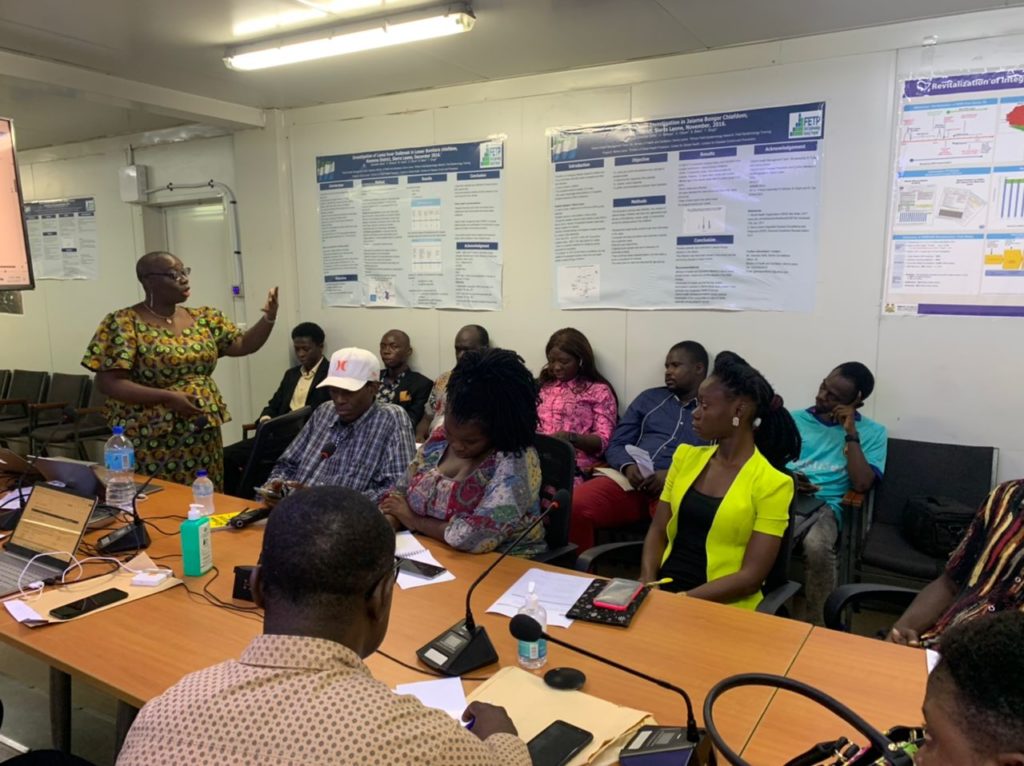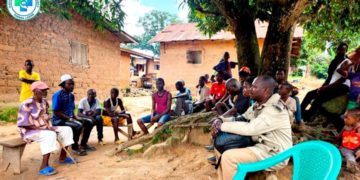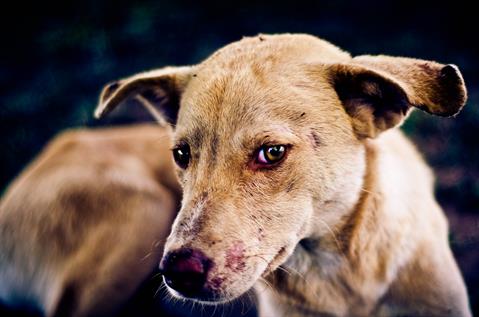Since its discovery 40 decades ago, rabies remains one of the world’s scariest diseases.
Not only does it have one of the highest fatality rates (99%), its risk of transmission among humans is also high due to exposure to its animal reservoirs like dogs and cats. Because of human interaction with these common pets, little attention is often paid to the danger associated with them.
Consequently, tens of thousands of people die from rabies annually. This, say experts, is due to lack of awareness, the reason why the Sierra Leone government and its partners are reinforcing the country’s anti-rabies response with emphasis on awareness raising.
“Because of entrenched sociocultural beliefs, people don’t believe that rabies is contracted from infected animals,” says Harold Thomas, the Health Education Programme Manager in the Ministry of Health and Sanitation (MoHS).
Mr Thomas’ office collaborating with other government ministries and departments, as well as local and international partners, under the One Health Platform in a two-month campaign designed to raise awareness about rabies.
One Health is a collaborative, multisectoral, and transdisciplinary approach towards zoonotic diseases like rabies. In Sierra Leone it brings together the ministries of Health, Agriculture, and Environment.
Rabies, a viral infection, is spread through the bite of an infected animal. The virus affects the nervous system of the infected mammals. It invariably causes swelling of the brain and deaths after a relatively short period of time. Dogs are the most common sources of transmission to humans. But various other animals are known to transmit the virus, including cats, bats and foxes.
This campaign entails a massive mobilization at community level to not just educate people about rabies, but also to encourage them to take their dogs and cats for vaccination.
Globally, according to World Health Organization (WHO) figures, 59, 000 people die of rabies annually.

The National Rabies Control Programme (NRCP) in the Ministry of Agriculture estimates about 300 people die from rabies infection annually in Sierra Leone.
The only treatment for human rabies infection is vaccination, which must be administered immediately a person is exposed through animal bite. But not only are these vaccines hard to come by, they are also expensive, says Thomas.
“That is why the best approach is prevention,” he tells ManoReporters.
This campaign aims to vaccinate all dogs and cats within the Western Area Urban and Rural. The NRCP estimates the number of dogs in the country to be 2, 667,985. The last dog census conducted in Freetown alone in 2008 showed that the capital city has the largest number of dogs – estimated to be 174, 650. Some 152, 437 of them were found to be stray dogs.
The campaign is funded by the United States Agency for International Development (USAID), through its Breakthrough Action, a global initiative designed to promote social and behavior change in the context of priority infectious diseases.
It’s all part of the global strategy of eliminating dog mediated rabies by 2030, in line with the UN MDGs.
John Idriss Koroma, a project officer with Breakthrough Action Sierra Leone, says this campaign is a followup to one conducted recently in the northern Bombali dustrict. He says the lessons learnt from that informs the strategy being employed in the Western Area.
“This is a scaled up rabies campaign, because the last campaign in Bombali we saw the impact it created,” he says at an orientation session for journalists and bloggers on Monday, August 22. It was designed to educate the journalists and bloggers on the causes and preventive measures against rabies. Koroma says it is part of the strategy of the campaign which blends mass media sensitization and deployment of community mobilizers for day to day engagement of people.

The mobilizers will target populated places, like schools, universities, market places, Attaya Bases as well as health facilities with special messages. Parents will be educated on the need to pay attention to children’s interaction with dogs and cats, because of the potential of contracting the virus through saliva of infected animals. Community leaders will also be encouraged to enact by-laws on handling of stray dogs.
“There is a lot of stray dogs in the communities. And we want to address the issues with that. This will at larger scale influence high positive behavioural change,” says Koroma.
The campaigners say jingles will also be produced in various local languages with the relevant messages to be aired on radio stations, to maximize the chance of reaching more people.
There are 85 Peripheral Health Units across the Western Area; all of them will be targeted with the key messages to ensure that when someone reports with an animal bite case, they can be provided the right information, says Koroma.
The campaign is being organized in the context of World Rabies Day on September 26th. This years commemoration is being held on the theme ‘One Health Zero Deaths.’
What makes rabies highly dangerous is that once an infected person shows signs and symptoms of infection, they have zero percent chance of surviving. This, says Thomas, is why the only reliable response to it is prevention through vaccination.
A crucial aspect of this campaign is to educate the public on what to do when they are bitten by an animal. Experts say the immediate advisable action is to wash the area of the skin for at least 15 minutes with soap and water. But because a large number of people in Sierra Leone may not be able to determine how long is 15 minutes, they are told in the messages to wash their skin 20 times.
“If you say 20 times, even the person who doesn’t know time can count 20 times and that will somehow amount to 15 minutes,” says Fatmata Bockarie, a programmes officer at Breakthrough Action.
The Initiatives for Media Development (IMDev) facilitated the orientation session for journalists, which took place at the Emergency Operation Center of the MoHS on Wilkinson Road in Freetown. A total of 35 participants drawn from various media houses and blogging platforms attended.
Yaema Thompson, Executive Director of IMDev, says the mass media is crucial because of its ability to shape public opinions, which comes in handy in dealing with public health issues.
“This is why increasingly public health and mass media are working closely. You cannot effect change without the right message,” she says.






















